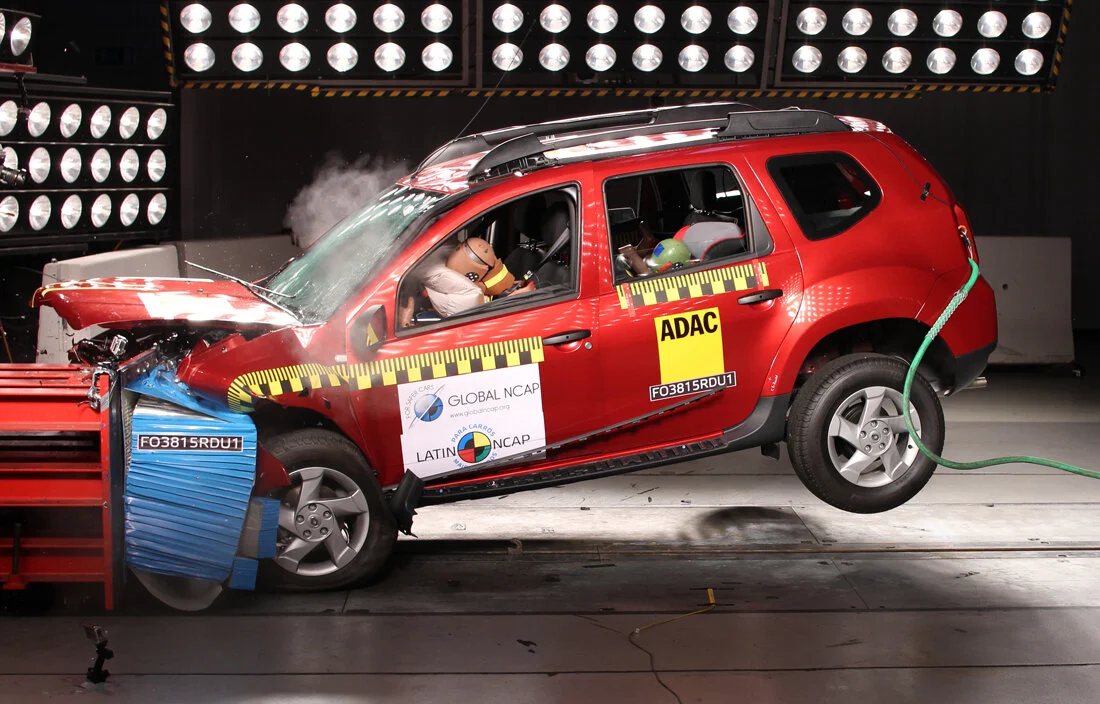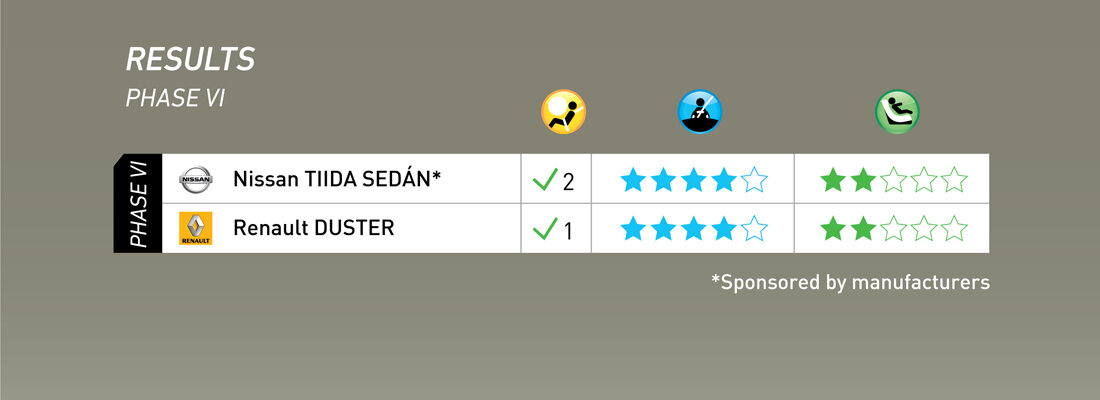Nissan Tiida Sedan Improves Its Basic Version While Renault Duster Narrowly Achieve Four Stars
The latest crash test results of the New Car Assessment Programme for Latin America and the Caribbean, Latin NCAP, continue to show progress in car safety in Latin America. Latin NCAP is continuing to champion improved levels of adult and child occupant protection which in many countries still fall below minimum UN safety standards. The latest results show an encouraging improvement to a comfortable four stars in adult occupant protection by the Nissan Tiida Sedan and an edging four stars in adult occupant protection by the Renault Duster.
The Nissan Tiida Sedan produced and purchased in Mexico, achieved a comfortable four stars in adult occupant protection and two stars in child occupant protection. The car’s structure is robust and the now two standard airbags and pretensioners manged to protect well the adult occupants in front collision. The Tiida Sedan which used to offer a basic safety version with no airbags was updated to double airbags and two pretensioners as standard version. The reaction from Nissan to equip all Tiida sedans with double airbags and double pretensioners in new cars produced as from today is a consequence of Latin NCAP’s result of the non-airbag version published earlier this year. This action shows the effect of Latin NCAP’s tests together with the proactive reaction of Nissan in order to improve vehicle’s safety in the region.
The basic version of the Renault Duster, produced and purchased in Colombia, is currently offered with only driver airbag and narrowly reached four stars in adult occupant protection and two stars in child occupant protection. This model offered marginal protection to both adults passengers chests. The passenger could have impacted its head with the dashboard as this version has no passenger airbag. The vehicle’s manual claims to have a version equipped with ISOFIX anchorages for the Child Restraint Systems however the unit tested by Latin NCAP did not have those anchorages. This model sold as Dacia in Europe offers double front and side passenger protection, ISOFIX and Electronic Stability Control system (ESC) as standard in the most basic safety version. Renault has not decided so far to remove the version tested by Latin NCAP of the market and offer to consumers a better safety equipped version as standard version.
María Fernanda Rodríguez, Latin NCAP President said: “I welcome manufacturers’ initiative of e making efforts to achieve good results for adult occupants and to improve the standard safety versions of the cars they offer to consumers. But at the same time I am very disappointed to know that these manufacturers make these efforts intended only for adult occupants, absolutely relegating child safety. It is worrying to know they are satisfied with a two stars results and I ask myself if they let their children travel in these vehicles knowing that they do not provide good protection during a crash. They do care about child safety in other regions and it seems that in Latin America and the Caribbean it is not a priority issue. I hope this sad reality to be rapidly reversed”.
Alejandro Furas, Latin NCAP Secretary General said: “Nissan’s inclusion of safety features such as double airbags and seat belt pretensioners in the Tilda is encouraging. However, it is very disappointing to see models like the Duster sold with less basic safety equipment in Latin America than models sold in Europe. Unfortunately child occupant protection is also still very low in the region. Latin NCAP will increase its testing requirements in 2016 to help push child safety to a higher level of priority with manufacturers. Latin NCAP continues to encourage local governments to require further safety improvements in all Latin American markets ahead of the “2nd Global High Level Conference on Road Safety: Time for Results” to be held in Brasilia this November. We strongly support Global NCAP’s call to democratise car safety for all, ensuring that consumers in Latin America experience the same high levels of safety performance as those in North America and Europe”
Latin NCAP is pleased to announce that more results will be released this year in November and December. In addition to our existing supporters Global New Car Assessment Programme (Global NCAP), International Consumer Research and Testing (ICRT), FIA Foundation and the Inter-American Development Bank (IDB). Latin NCAP is also being assisted in 2015 by the Bloomberg Philanthropies Global Road Safety Initiative.
About Latin NCAP
The Latin New Car Assessment Programme (Latin NCAP) was launched in 2010 to develop a regional system of independent crashworthiness and safety rating across Latin America and Caribbean (LAC). Latin NCAP replicates similar consumer testing programmes developed over the last thirty years in North America, Europe, Asia and Australia, and which have proved to be very effective in improving the safety of motor vehicles. Since 2010 Latin NCAP has published the results of more than fifty cars in six test phases.
Latin NCAP is an Associate member of Global NCAP and supports the United Nations Decade of Action for Road Safety 2011-2020 especially the vehicle pillar of the Global Plan for the Decade.
More information at www.latinncap.com






